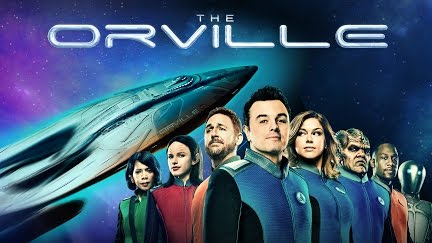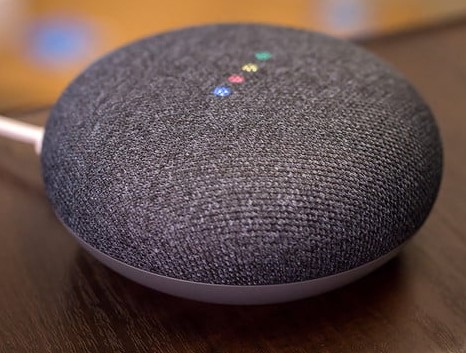 So, my Cord Cutting experience (having actually done it, that is) goes back a while now… and I now consider myself a true practical expert. I admit, these are NOT the questions I ever asked… but some folks are, so it is worth covering!
So, my Cord Cutting experience (having actually done it, that is) goes back a while now… and I now consider myself a true practical expert. I admit, these are NOT the questions I ever asked… but some folks are, so it is worth covering!
4 Cord-Cutting Myths Dispelled
Forbes – By: Mark N. Vena – “It’s not an exaggeration to say that cord-cutting is now a national obsession. Millions of consumers have shed their cable and satellite subscriptions over the past ten years, and every major legacy cable and satellite company has suffered. Some choose to cut the cord in an attempt to save money. Some do it out of a desire to better pick and choose their content, and consume it whenever and wherever they want.
What continues to surprise me is how many individuals jump into cord-cutting without close consideration of the tradeoffs. This is not to say that it is a bad idea—simply that consumers should consider all aspects of the decision before moving forward. In this column, I’d like to address several common misconceptions about cord-cutting that I’ve identified from my longtime association with the category.
Myth #1: You’re going to save a ton of money when you cut the cord
Most consumers hate their cable or satellite company on a level usually reserved for the IRS. This frustration stems from the fact that in many markets across the United States consumers only have one option to choose from. Additionally, cable and satellite companies often have byzantine pricing schemes that make it purposely difficult for consumers to get an Internet-only subscription without purchasing some minimal premium video package. On top of that, most cable and satellite companies have been slowly increasing their pricing over the past couple of years due to broadcast TV surcharges and regional sports fees.
The thing to know is that even popular streaming services like Netflix, YouTube TV, PlayStation Vue, and DirecTV Now are not immune to raising their monthly pricing. While there is a still a gap between what you’d pay for an equivalent cable or satellite package (excluding Internet access), the delta is closing. In short, if you cut the cord, don’t count on necessarily saving the dollars you thought you would.
Myth #2: I will be able to completely replace all the channels from my cable or satellite subscription
This is perhaps the most glaring misconception that consumers have about cord-cutting. While consumers typically want to have access to all the channels they enjoyed with their cable or satellite subscription, the fact of the matter is that the average consumer only watches 17 channels or less, 80% of the time. It’s helpful to take time to study your own viewing habits and identify the must-have channels. Interestingly, despite the popularity of premium Over-The-Top (OTT) video subscriptions, local TV channels remain quite popular for news, weather, and sports.
Fortunately, there are easy-to-use Web site tools like Suppose and Untangle.tv that analyze what you currently watch and how you watch it, and provide recommendations on which services will best satisfy your viewing habits. Consumers should also consider adding an Over-The-Air (OTA) solution to augment their cord-cutting endeavors. Not all local broadcast TV channels are available outside of a conventional cable or satellite subscription—an OTA device can help you capture local news, sports, and weather for free. More on this later.
Myth #3: What streamer you select is unimportant
Selecting the right streamer to operate at the heart of your cord-cutting setup is actually quite essential and should not be taken lightly. Your likely choice will ultimately come down to an offering from Roku, Amazon, Google, or Apple.
My longtime favorite is the Roku Ultra ($99 MSRP), which offers, among other capabilities, essential features like HD, 4K/HDR support, dual-band wireless connectivity, voice remote functionality, and a lost remote finder. What really sets Roku apart, though, is its gloriously simple and intuitive interface and its voice-based universal search capability. This search functionality is critical for avoiding the dreaded “overlapping content syndrome” where you end up paying for a movie only to discover it was available as part of a premium channel you already subscribe to. Though Roku was early to the party, it’s not the only one with this capability—Comcast’s Xfinity voice search is nothing to sneeze at and Apple has made significant strides in this area. Roku also offers, at no cost, its Roku Channel, which features surprisingly fresh hit movies, shows, live news, and sports. The Roku platform is also the most “agnostic” streamer of the major brands; it works with a wide variety of OTA solutions for local TV viewing and its Channel Store includes more than 1,800 channels of highly specialized content. Side note: several major television manufacturers (TCL, Sharp , Philip, Hitachi , and RCA, to name a handful) now embed Roku functionality into their TVs. This is worth considering if you’re in the market for a new TV.
Apple TV 4K is a bit pricey ($199 MSRP for the 64GB model) but remains an excellent choice for users who are already a part of the Apple AAPL +0% ecosystem with iPhones, iPads, and iMacs. The product’s Apple-esque look and feel will be immediately familiar to legacy Apple users. Additionally, its Apple TV app, coming in September, looks like it will provide many useful navigational, discovery, and personalization enhancements. However, Apple TV still significantly trails Roku in terms of the sheer number of customized content channels available (many of which are free).
Myth #4: Watching OTA channels is illegal
I often get asked whether watching Over-The-Air broadcast channels is somehow illegal. This might have something to do with the infamous 2012 Supreme Court ruling that Aereo, who offered a streaming subscription service with OTA channel content, infringed upon the rights of copying holders (the case was initiated by several broadcast networks). The FCC has also done a lousy job of promoting the fact that OTA channels are free to consumers to access (and have been since the early 2000s). These two things, in my mind, helped create the false perception that consuming OTA channels is illegal.
OTA viewing is, in fact, one of the best ways you can cut the cord and save money at the same time. On top of that, many of these channels are broadcast in HD. If you don’t have an appetite for premium channel services, OTA is probably your best bet access local channels in your market. Solutions like Tablo and AirTV not only allow you to easily capture local TV channel signals via a low-cost antenna, they will enable you to “stream” the channels to other devices, such as smartphones, tablets, and even other TVs. Products like Tablo and AirTV even integrate local TV channels into a familiar, intuitive linear viewing guide and offer both cloud-based and local storage DVR capability. Did I mention that Tablo even offers ad-skipping capability for recorded content?
Some closing thoughts
Hopefully these myth-busting explanations will help users who are thinking of jettisoning their cable or satellite subscriptions to be better informed. The sheer amount of premium streaming content now available to consumers can be overwhelming, and that trend is not likely to decelerate with the likes of Apple and Disney getting into the video content creation business. Competition is a good thing, and consumers will have more choices than ever for content that precisely suits their tastes and sensitivities. There’s a lot for consumers to be excited about when it comes to cutting the cord, but it’s a decision that should be made thoughtfully and deliberately.
Disclosure: Moor Insights & Strategy, like all research and analyst firms, provides or has provided research, analysis, advising and/or consulting to many high-tech companies in the industry. The author does not have any investment positions in any of the companies named in this article.”




 So, my Cord Cutting experience (having actually done it, that is) goes back a while now… and I now consider myself a true practical expert. I admit, these are NOT the questions I ever asked… but some folks are, so it is worth covering!
So, my Cord Cutting experience (having actually done it, that is) goes back a while now… and I now consider myself a true practical expert. I admit, these are NOT the questions I ever asked… but some folks are, so it is worth covering! This would give whole new meaning to Blue Screens of Death! Yikes! And, would you want someone to be able to hack your brain?!
This would give whole new meaning to Blue Screens of Death! Yikes! And, would you want someone to be able to hack your brain?! I love “The Orville” – it is more “Star Trek”-y than the recent “Star Trek: Discovery” is… I have some hope for “Picard,” but until then, I have “The Orville.”
I love “The Orville” – it is more “Star Trek”-y than the recent “Star Trek: Discovery” is… I have some hope for “Picard,” but until then, I have “The Orville.” My buddy, that I call the “Other Computer Curmudgeon,” warned us… there ARE humans listening as well!
My buddy, that I call the “Other Computer Curmudgeon,” warned us… there ARE humans listening as well! This is why I have an Amazon FireTV App and a Roku Channel! 70% of users are covered!
This is why I have an Amazon FireTV App and a Roku Channel! 70% of users are covered!